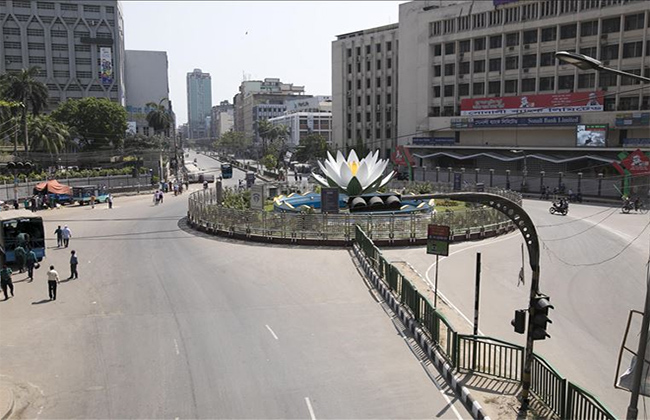
Lockdown is one of the means to contain the spread of Covid-19, not the only way to do it. Lockdown slows down COVID‑19 transmission by limiting contact between people, which many other restrictive measures can also do.
On March 29, 2021, the Prime Minister’s Office (PMO) rightly came up with an 18-point directive, aimed at ensuring social distancing and compliance of health guidelines. The measures in the 18-point directive were well designed and could be good enough to contain the spread of the virus.
But a spike in new infections and death figures since early April possibly prompted some quarters to press the panic button creating pressure on the policymakers to go for tougher steps, such as lockdown, to arrest the spread of the pandemic without really thinking about the collateral damage that lockdown entails.
The well-thought out 18-point PMO directive was thus replaced with the decision to go for a week-long lockdown from April 5, which was extended till April 13 on Sunday, with a ‘complete lockdown’ in plan from April 14.
The April 5-11 lockdown saw changes in rules for public transport and shopping malls half way through and a reversal in decision on shopping malls saw rush of people to some of the market places, including the Dhaka New Market, as the relaxation was for only five days.
A top global health official, Dr. Hans Kluge, the regional director for Europe of the World Health Organisation (WHO), in one of his statements said full-scale lockdowns should be a ‘very, very last resort.’
“It is never too late (to tighten measures) but of course, definitely, we are concerned. In general, this is the time to step up the restrictive measures … with lockdowns as a very, very last resort,” Kluge said in his statement.
WHO on its official position on lockdown says: “these measures can have a profound negative impact on individuals, communities, and societies by bringing social and economic life to a near stop.”
“Such measures disproportionately affect disadvantaged groups, including people in poverty, migrants, internally displaced people and refugees, who most often live in overcrowded and under resourced settings, and depend on daily labour for subsistence.”
In Bangladesh, those who earn their livelihood on daily labour include a large size of the population, such as rickshaw pullers, three-wheeler baby taxi drivers, workers of public transports, restaurant and tea-stall employees and casual laborers in construction and different other sectors.
But it’s not only the workers and employees of these sectors, but also the owners of small businesses particularly in the huge service sector who were hit hard by the last year’s lockdown. Many people lost their jobs because of the closure of businesses during the lockdown and were displaced from the cities.
Those who live on house rents were also hit hard as many people were unable to pay rent and many others deserted the cities with families.
Only those who enjoy the home office facility and get paid in their bank accounts for whatever they do from home are immune to lockdown – nobody else, neither the workers and employees nor the owners of private enterprises, big or small, whatever.
The government, during last year’s lockdown, initiated measures to extend financial support to those who were affected, but the support hardly reached most of these segments as they were not even in the list of affected people.
WHO recognizes that at certain points, some countries have had no choice but to issue stay-at-home orders and other measures, to buy time.
Governments must make the most of the extra time granted by ‘lockdown’ measures by doing all they can to build their capacities to detect, isolate, test and care for all cases; trace and quarantine all contacts; engage, empower and enable populations to drive the societal response and more.
Could we capitalize on the last year’s lockdown to build our capacities? Could we drive a societal response? Then why are we planning another “complete lockdown” when we have other options, such as an 18-point directive from PMO?
Down with last year’s lockdown, many people just got up and stood on their feet to move forward with renewed efforts. The lockdown, after repeated possible extensions, may, in course of time, flatten the virus curve. But in doing so, it may also dash the hope of any recovery of these people who constitute the majority of the population.
The government should seriously rethink about the enforcement a full lockdown from April 14, 2021.

